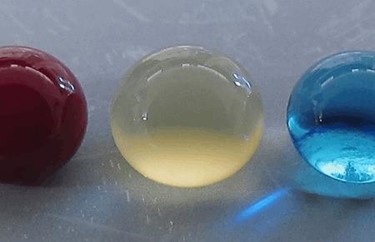Blood-Repelling Titanium Surfaces Could Lower Implant Rejection Rates

The likelihood of implant success could be enhanced by incorporating blood-repelling — or superhemophoboic — titanium into implant surfaces. Scientists from Colorado State University (CSU) have demonstrated that hemophobic surfaces significantly reduce platelet adhesion and activation, a process that can lead to life-threatening blood clots.
The introduction of any foreign material into the body exposes it to a number of complications that can lead to rejection of an implant or treatment, such as bacterial infection, inflammation, or the formation of blood clots. Traditionally, device developers have mitigated these risks by constructing devices with biocompatible materials that are non-threatening to the body’s immune system. Recently FDA-approved heart stent technology, for example, uses materials that the body can absorb when the device’s job is finished.
“What we are doing is the exact opposite,” said Arun Kota, assistant professor of mechanical engineering and biomedical engineering at CSU, in a press release. “We are taking a material that blood hates to come in contact with, in order to make it compatible with blood.”
Working with Ketul Popat, an expert in tissue engineering and bio-compatible materials, Kota and his team began experimenting with sheets of titanium commonly used in medical implants. By chemically altering the surface of the titanium, researchers demonstrated that blood can flow past the surface as if there were no foreign material present.
“The reason blood clots is because it finds cells in the blood to go to and attach,” said Popat. “Normally, blood flows in vessels. If we can design materials where blood barely contacts the surface, there is virtually no chance of clotting, which is a coordinated set of events. Here, we’re targeting the prevention of the first set of events.”
In a study published in Advanced Healthcare Materials, the CSU team tested variations of resurfacing the titanium and demonstrated that fluorinated nanotubes worked best in preventing platelet adhesion, compared to more hemophilic surfaces.
“It is envisioned,” wrote study authors, “that the understanding gained through this work will lead to the fabrication of improved hemocompatible, superhemophobic medical implants.”
By reducing blood clot risk mechanically, doctors could also reduce the prevalence of blood thinners — drugs that must be closely monitored to prevent dangerous complications.
“Devising a way to prevent blood clotting without using anticoagulants is one of the holy grails in medicine,” said Don Ingber, founding director of Harvard’s Wyss Insitute.
Wyss researchers recently introduced a device-surfacing technique called Slippery Liquid-Infused Porous Surfaces (SLIPS), which was inspired by a carnivorous species of plant. A liquid layer on a SLIPS surface can repel “virtually any material.” Researchers tested the surfacing on over 20 different biomaterials and demonstrated its ability to prevent blood clots from forming for eight hours when implanted in pigs.
